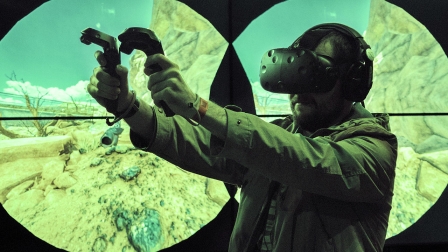This Is What Your Future Virtual-Reality Office Will Be Like
The scene: An empty conference room, five years from now. You sit down at the table with your tablet and put on a pair of lightweight glasses. Suddenly the room comes to life. To your left, you see your colleague Jessica, who’s joining from New York. To the right, the company CEO, Beth, who’s currently in Atlanta. Across the table from you is Hassan, who’s joining from his home office in London.
You know all of them are virtual projections that the glasses are adding to the conference room you see in front of you. But they’re so lifelike it still startles you, even though you’ve been having meetings like this for the past year.
Thanks to an array of virtual reality (VR) and augmented reality (AR) technologies in development right now, this scenario isn’t that far away. And while VR might be in the news lately because some events in the Rio Olympics will be broadcast in VR this August, the technology’s biggest impact is likely to be in the workplace.
At the moment, VR is in its early, awkward adolescence, but these are four of the ways we can probably expect it to transform how we work with one another in the years ahead.
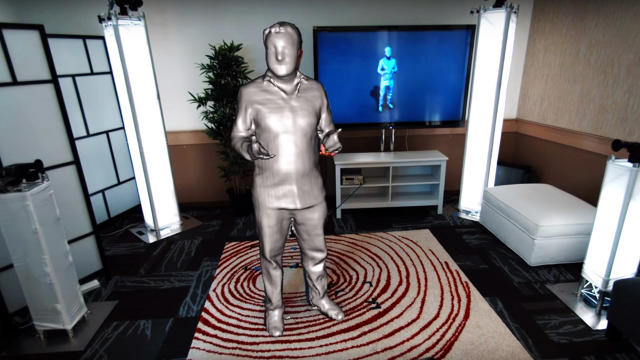
Farewell To The Videoconference
When you add cameras to VR or AR displays or headsets, you start to discover the interactive, person-to-person potential of the technology. This “virtual presence” will make videoconferencing and Skype calls look primitive by contrast.
For instance, the HTC Vive is a fully immersive VR headset that has a front-facing camera and an array of sensors, capturing the scene in front of you and placing you accurately within a room. Microsoft’s planned Holoport puts 3D cameras in the room with you, which can capture you and your gestures as well as other people and things in the room.
With the addition of cameras like these, VR can let you appear virtually in a real meeting room even if you’re thousands of miles away. I might be in a room in San Francisco while you’re in New York, and as long as I have my VR glasses on, it will look like you’re sitting right next to me—and you’ll feel like you’re in the room with me, too.
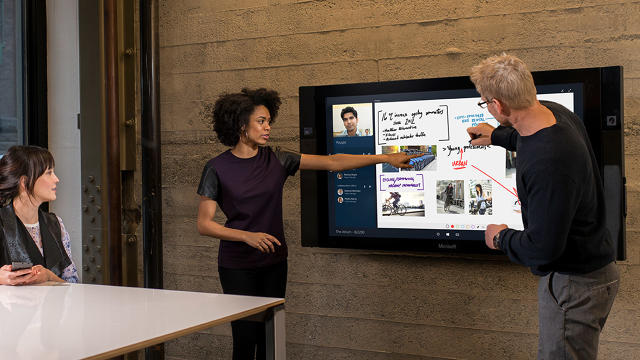
Head To The Virtual Whiteboard . . .
Being able to see the people you’re working with is nice, but it’s even more powerful to be able to see the things we’re working on together.
Imagine that in your virtual conference room there’s a whiteboard on the wall. Your VR/AR glasses can show you the scribbles everyone in this meeting have contributed, all combined into one shared whiteboard. If you run out of room, it’s easy to scroll the virtual whiteboard with a flick of the wrist, exposing new, blank spaces—and to select, cut, and paste scribbles that are already there.
This will prove an unexpectedly powerful feature. For brainstorming and generating new ideas, it really helps to be face to face. And simple as it is, the (analog) whiteboard is ubiquitous because it already lets you do that; people love to draw and write on the wall, and talk about whatever’s taking shape there.
Efforts at taking this experience virtual have had uneven results. There are virtual whiteboard apps for PCs and iPads, but most just aren’t that compelling. Microsoft’s Surface Hub is a turbocharged whiteboard/display, but it’s still limited compared to VR. But put a whiteboard in a shared virtual space, though, and you’ll find that it’s much closer to the experience of working at a real whiteboard.
So while VR company Magic Leap gets headlines for the virtual elephants and virtual robots that its glasses are able to insert into the real world, those probably won’t prove the most useful.
. . . Or Scrap It Altogether And Draw In 3D
But why stop at two dimensions? It’ll soon be possible to draw three-dimensional sketches right in the middle of the conference room, creating colorful shapes that others can rotate, expand, look inside, and add to.
One VR company, Leap Motion, is building this technology. It uses a front-facing camera mounted on a VR headset to capture your gestures, the location of your hands, and so forth. With that capability, you can use your real hands to create virtual things. You can conjure cubes and spheres, or sculpt virtual clay. You could draw a virtual car, and then you could walk around that drawing, look inside it, view it from different angles, add colors and textures, and so on.
Google’s Tilt Brush is a similar experiment that lets people create surprisingly vivid, colorful 3D sketches in virtual reality. This capability is coming sooner than you might think.
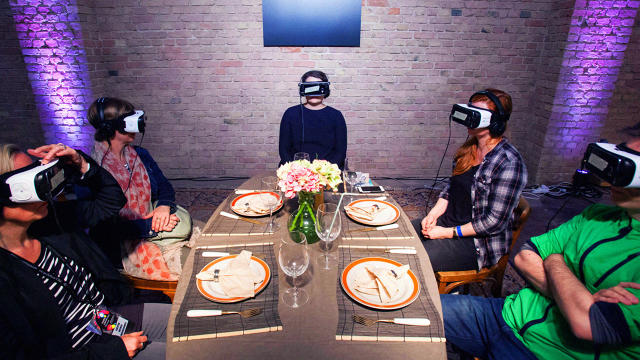
New Methods Of Prototyping
Once brainstorming is done, it’s time to discuss the progress being made on your company’s latest prototype. Imagine that in the middle of the conference table you see a realistic 3D rendering based on a CAD file that just arrived from the engineering department.
That kind of capability would be powerful not just for industrial designers but also for architects, mechanical or civil engineers, real estate agents, and others.
You’ll know VR collaboration has truly arrived when people start using it to work with one another even when they’re in the same room, much the way people today IM and Slack each other even when they’re sitting side by side. When that happens, the experience will be completely identical whether we’re actually in the same place or not—and for the first time ever, location will no longer be a barrier to collaborating.
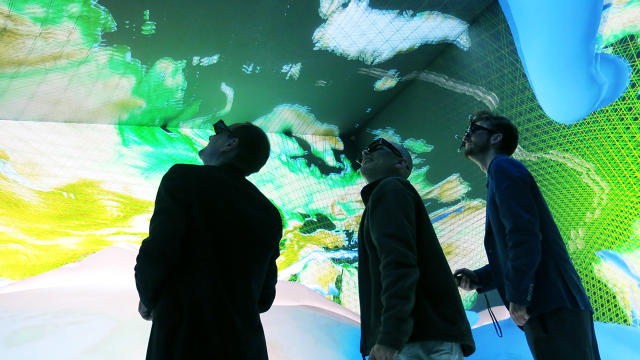
How We Got Here And Where We’re Heading
Much the way the first movies were basically radio plays with images, VR/AR workspace technology will start by replicating in virtual space the kinds of collaboration we can already do in the real world. From there, they’ll quickly evolve to provide capabilities we can only dream of today. For brainstorming, ideation, design, and related tasks, that’s going to be transformative.
Twenty years ago, email was the dominant means of collaborating remotely, because at the time, that’s all that existed. Yet it was a huge improvement over phone calls and faxes. A decade later, webcams came on the scene. They were expensive accessories, configuration could be a problem, and broadband still wasn’t great. But compared to email, it was a huge step forward. Eventually, Skype took off, webcams got even cheaper, and now they’re built into every laptop and mobile device on the market.
VR is going to develop in a similar way. Oculus Rift headsets are expensive, bulky, and block out the real world completely. But like the early Logitech webcams, they’re just the starting point. Eventually, VR tech will become smaller, lighter, and—especially in the case of mixed-reality—far less intrusive.
When that happens, VR is going to reshape business collaboration and communication even more profoundly than videoconferencing did 10 years ago, or email 20 years ago. It’s going to be a whole new world—woven right into the one we already live and work in.
Stephane Kasriel is the chief executive of Upwork, where he built and led a distributed team of more than 300 engineers located around the world as SVP of engineering before becoming CEO. Stephane holds an MBA from INSEAD, an MSc in computer science from Stanford, and a BS from École Polytechnique in France. Follow him on Twitter at @skasriel.
Fast Company , Read Full Story
(36)

